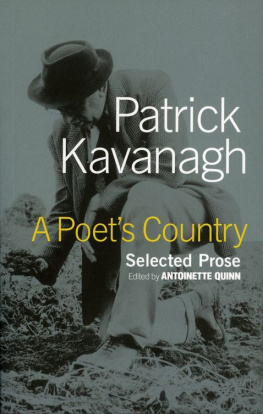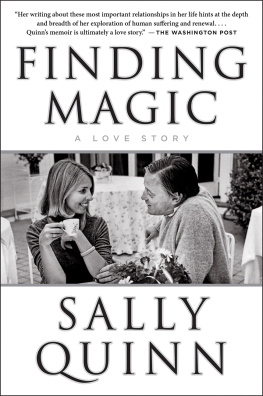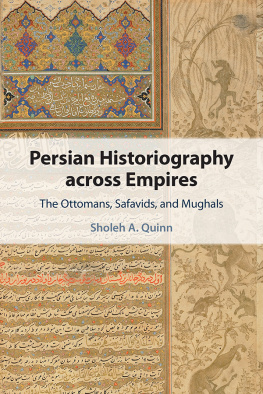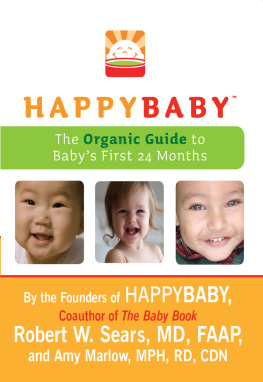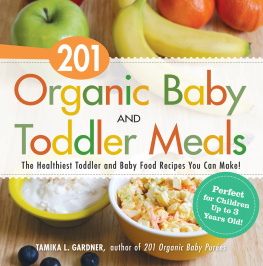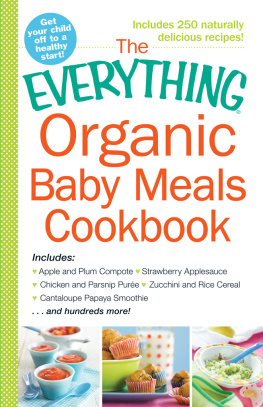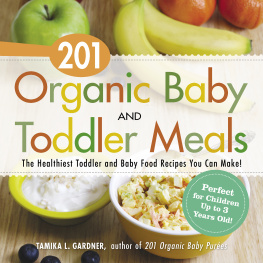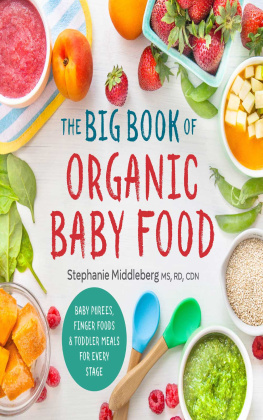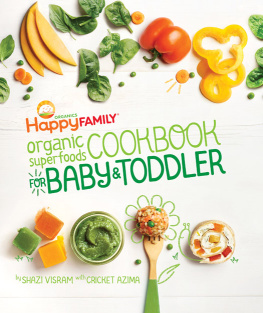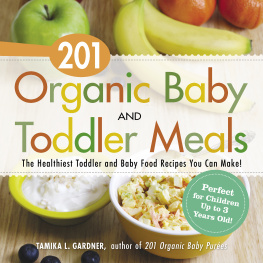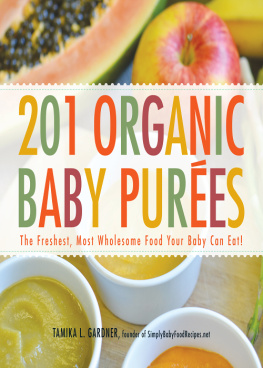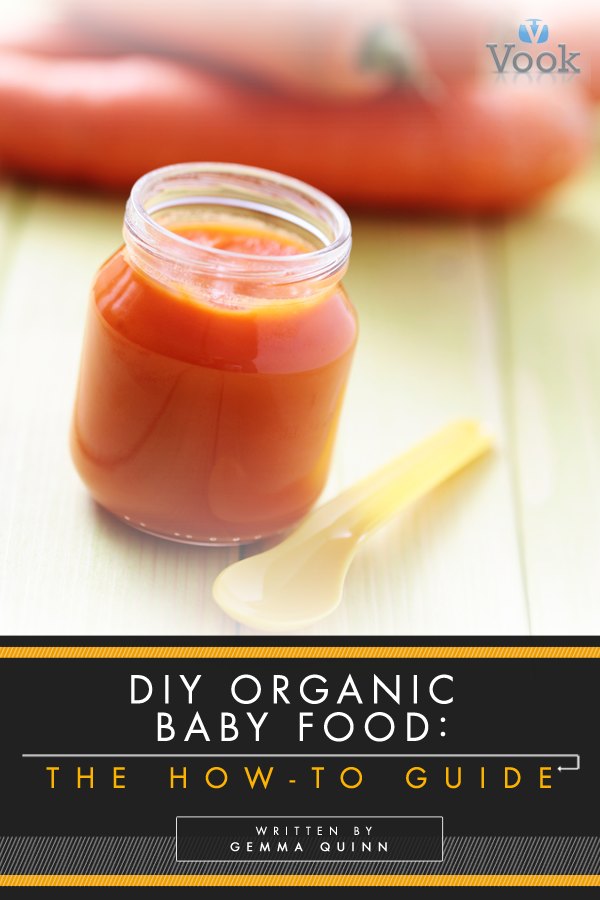Credits & Copyright
Author Profile:
Gemma Quinn - Gemma Quinn is a mother, a writer, a Personal Trainer, and has worked as a Massage Therapist since 2006. Writing and Fitness are her two passions in life, as well as making sure she doesnt start looking like her chubby little Italian grandmother, God rest her sweet soul. She lives on the coast of North Carolina with her husband, four dogs, and one cat. The cat is the boss.
Web Links:
- Author's Facebook
- More Info
DIY Organic Baby Food: The How-to Guide
by Gemma Quinn
If youre like most caring parents, your babys health and well-being top your list of priorities daily. So why wouldnt you want to feed your baby the healthiest, purest foods available? Download: DIY Organic Baby Food: The How-to Guide a Vook that features interactive text and recipes, showing you how to prepare delicious meals for your baby that are higher in nutrition, free of harmful toxins, and will save your family money!In eight easy-to-digest chapters, youll learn everything you need to now about DIY organic baby food preparation. First youll learn the many benefits of an organic, DIY, eco-friendly diet for your baby, and what his or her nutritional needs are now and as a toddler. Then youll learn about the essential tools youll need and how to prepare for your own organic kitchen, and youll dive into recipes for your babys first through third years. Finally, youll learn how to integrate new foods into your babys diet and address allergy concerns, how to create a clean and safe environment for food preparation, and how to distinguish between the types of organic foods you see at your local grocery store. Tips and cautions throughout provide added dimension to help parents make this exciting transition easily.
Copyright 2011 Vook, Inc.
Compilation copyright 2011 Vook, Inc.
Vook is a registered trademark of Vook, Inc.
Chapter 1
Why Organic? Why DIY? Why Eco-Friendly?
C ongratulations! You have a miniature foodie in training in your life! You will now be embarking on one of the most important things you will ever do: Introducing your baby to a lifetime of healthful eating. Lets get things started in the best direction possible for your little onelearning the ins and outs of DIY organic baby food. You will soon be an organic baby-food-making machine when you see how fast, easy, and cost effective it can be!
Why Organic?
- Recent controlled studies have shown that organic food is more nutritious than non-organic.
- Commercial baby food is usually comprised of concentrated fruits and vegetables, so your baby is at higher risk of exposure to pesticide residues than you are.
- New research also verifies that organic produce is lower in nitrates and higher in necessary anti-oxidants than factory farm varieties.
- Organic foods just plain taste better. Researchers at Washington State University ran lab taste test trials that concluded that organic produce was naturally sweeter (and without the addition of corn syrup, which your baby certainly does not need).
- No toxic risk from added pesticides. Certified and USDA inspected Organic Farms must follow organic field management practices using natural methods to control pests, rot, and other detriments to crops, so they farm in harmony with the natural environment.
- Many organic meats, such as beef, is produced without force-feeding the animals hormones and antibiotics, which are standard practices in feedlot beef production.
Why DIY?
Because organic foods of all types are usually higher priced than more readily available food, you will see how Doing It Yourself will offset the extra money you will be spending to buy organic.
The benefits of DIY, however, go beyond just saving money:
- Processed baby foods have added water, sugars, and fillers, which dilute the nutrient content of your babys food.
- Vitamins and minerals are destroyed in the high temperatures baby food manufacturers use to jar the food properly so they can be stored at room temperature.
- DIY baby food can be cooked quickly, preserving the taste, nutrients, and natural color of the foods you prepare.
- DIY enables you to improve on the freshness of the food your baby eats.
- Processed baby food is expensive, averaging $.60 - $1.20 per 4 oz. jar, while DIY costs $.50 per 4 oz. serving on the average, especially if you shop in season (a healthful way to eat, anyway) or on sale.
- DIY baby food is easy to prepare; in as little as 30 minutes per week, you can set your baby up with a weeks worth of meals.
Why Eco-Friendly?
- Organic farming helps families live less toxically.
- Industrial agriculture plays havoc with downstream environments, meaning the runoff from pesticides and synthetic fertilizers damages all communities surrounding it.
- Organic Farming reverses the toll chemical fertilizers have taken on the loss of topsoil in the U.S. Losing the topsoil contributes to loss of micronutrients and minerals in fruits and vegetables. Farming organically adds organic matter instead, and studies prove that there are higher levels of vitamins and minerals in organic foods.
- To be labeled Certified Organic organic foods cannot be genetically modified in any way, so they have no GMOs (genetically modified organisms). Theres a growing body of suspicion targeting GMOs in both the death of Monarch butterflies as well as the much more common occurrence of peanut allergies in children in the last 10 years.
- Organic farming promotes biodiversity by using compost fertilizers, beneficial insects etc, in farming, instead of chemicals.
- Organic beef cattle are often grass-fed, rather than raised in feedlots. Prior to being killed, grass-fed cattle get to live as they shouldin the sunshine, eating grassrather than standing shoulder-to-shoulder in a metal building eating corn.
CAUTION
According to the National Academy of Science, neurological and behavioral effects may result from low-level exposure to pesticides that begins in utero or before your baby is even born. Numerous studies also show that pesticides adversely affect the nervous system, increase the risk of cancer, and decrease fertility.
Chapter 2
Nutritional Needs for Newborns Through Toddlers
A ccording to the American Academy of Pediatrics, the USDA, and most pediatric experts, the best food for newborns is breast milk, hands down. If at all possible, a newborn should be given her mothers milk for at least four months, but the longer the better.
In doing so, you decrease your babys chances of developing:
- Atopic dermatitis.
- Cows milk allergy.
- Wheezing in newborns.
- General allergies.
Of course there are some situations that make breast-feeding impossible and the alternative is to choose a nutritionally well-balanced infant formula. However, when baby gets a little older, usually between four to six months old, its time to begin feeding solids. Historically, single-grain infant cereals were first food choices, followed by vegetables, fruits and meats, but recently studies have shown that the best first solids may be iron and zinc-rich pureed meat or poultry.
Toddler Nutritional Requirements
Appropriate toddler serving size is:
- One tablespoon per year of your childs age, or 1/4 to 1/2 adult size portion. For example: a two-year old would be served two tablespoons fruits or veggies per serving and a four-year-old would get four tablespoons.



